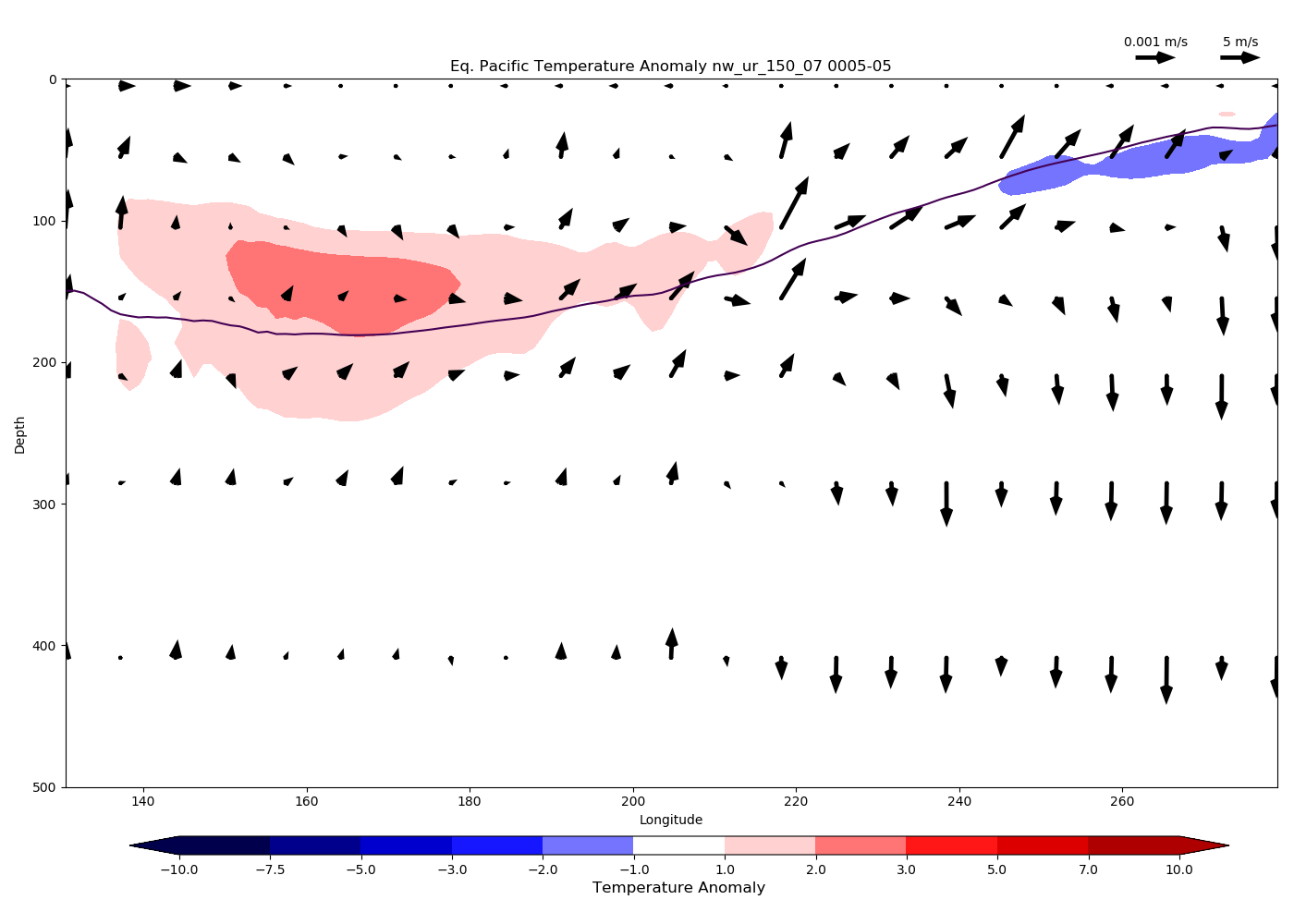
0005-06
Evidence for Eastward Propagating Oceanic Kelvin Waves in CESM-WACCM4 Nuclear Winter Experiments
In the 150 Tg US-Russia case (nw_ur_150_07), we observe anomalously warm subsurface water temperatures along the equatorial Pacific moving eastward. However, we need better proof that this movement of water is actually an oceanic Kelvin wave.
1. What is a Kelvin wave?
2. How do you diagnose a Kelvin wave?
3. How do you distinguish a Kelvin wave from eastward advection of warm water in other ways?
Profile of
temperature anomaly in the subsurface ocean for the 150 Tg US-Russia
case. Anomalies are based on control run.
0005-05

0005-06
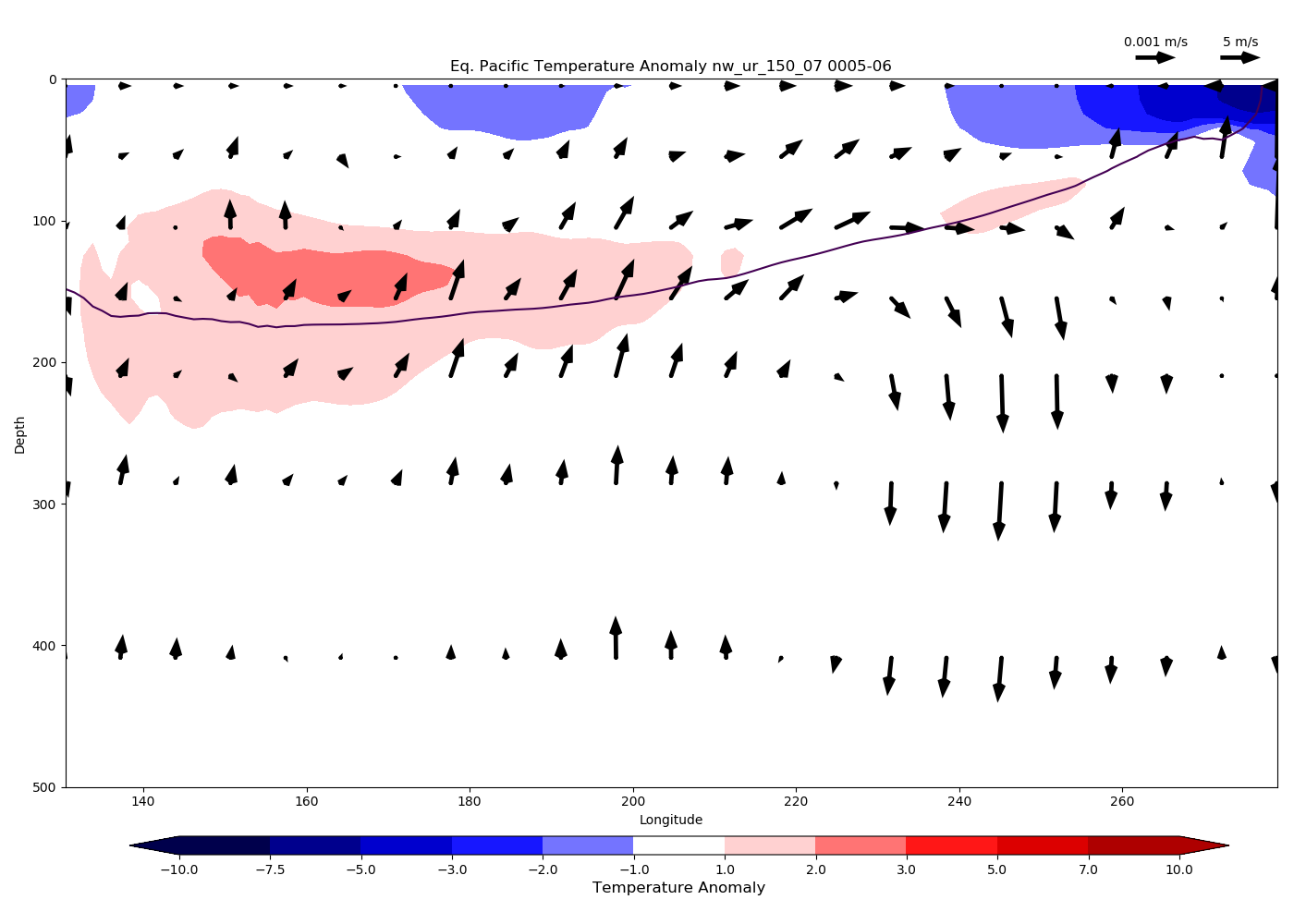
0005-07
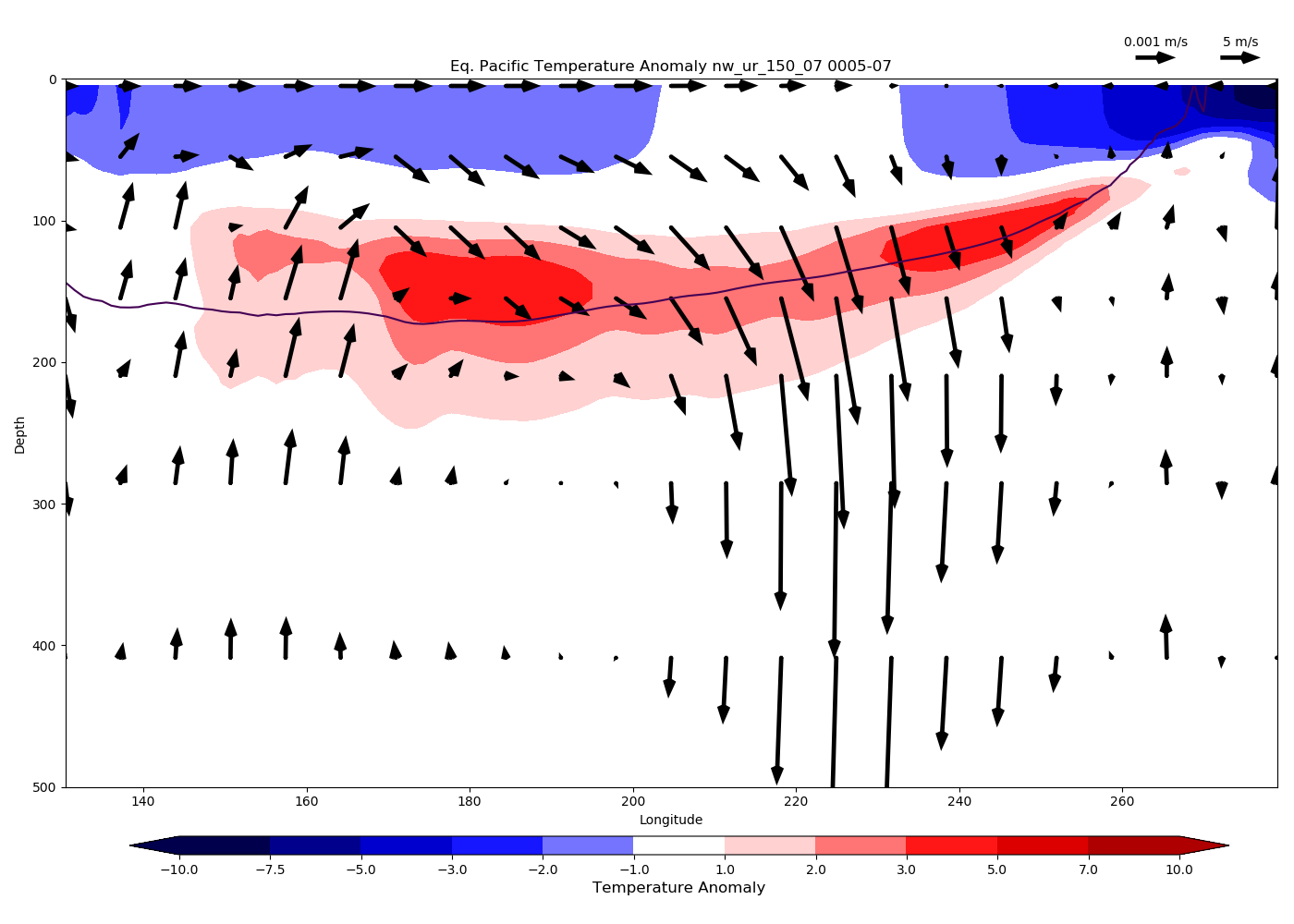
0005-08
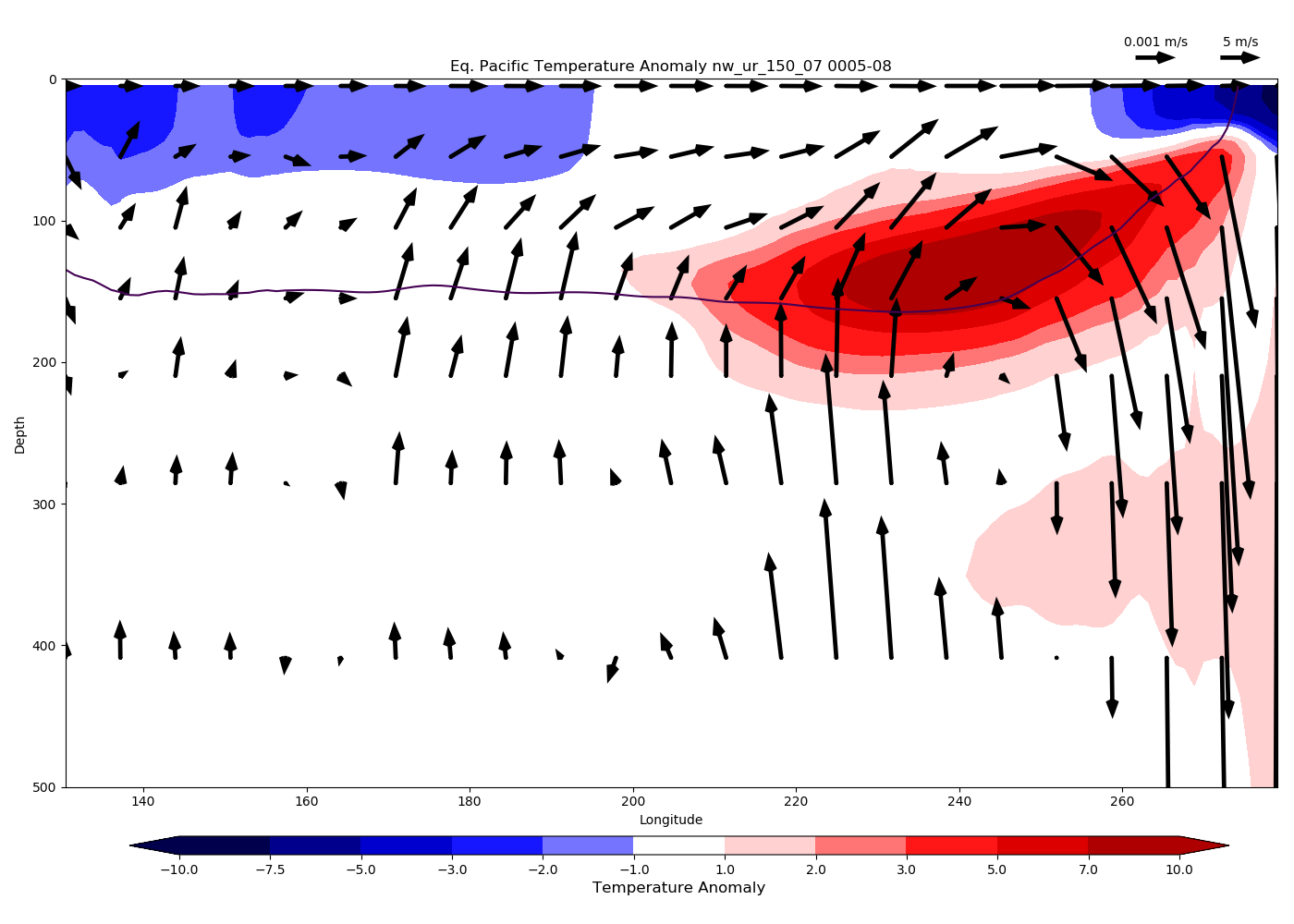
0005-09
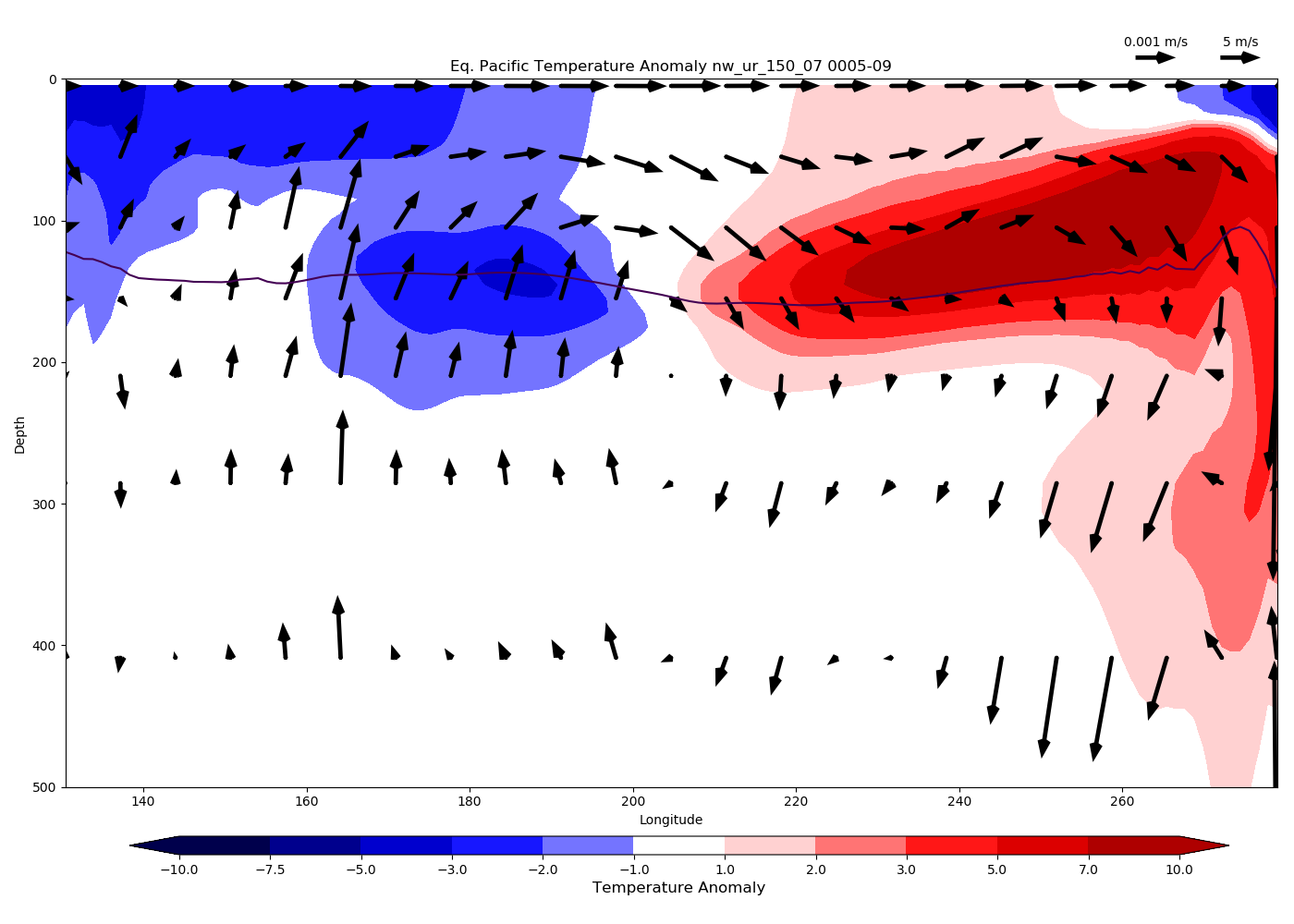
Literature Review
Kelvin wave velocity = 2.5 to 2.8 m/s
Roundy and Kiladis (2007): Analysis of a Reconstructed Oceanic Kelvin Wave Dynamic Height Dataset for the Period 1974-2005.
One
metric of basinwide Kelvin wave activity: averaging the squares of
dynamic height estimates (SSH) from 147E to 125W and smoothing the
result with a 121-day centered moving average.
Hovmoller plot of
SSH and zonal wind anomalies using 121-day centered moving average.
Harrison and Schopf (1984): Kelvin-Wave-Induced Anomalous Advection and the Onset of Surface Warming in El Nino Events
Show that the response of the SSTs in the Pacific to a westerly wind stress anomaly is for the eastward advection of warming due to Kelvin waves, as evidenced by the rate of progression of these anomalies.